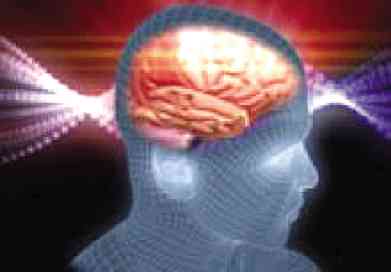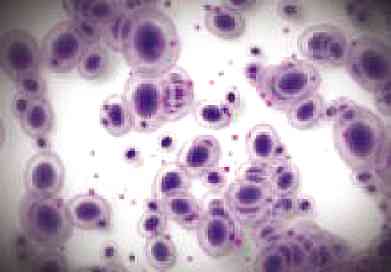Patient needs and science guide Novartis R&D

NOVARTIS researchers are leveraging the latest advances in human genetics to probe the underlying causes of Alzheimer’s disease.
Discovering and developing effective and safe medicines is like finding the philosopher’s stone,” said Dr. Mark C. Fishman, referring to a legendary alchemical substance capable of turning metals into gold or silver and believed to be an elixir for life that provides rejuvenation and immortality.
Fishman is the president of the Novartis Institutes for BioMedical Research (NIBR), the global pharmaceutical research organization of research-based Swiss healthcare company Novartis. He was one of the speakers during the 2015 Novartis Innovating for Patients forum in Basel, Switzerland.
Finding philosopher’s stone
Although drug discovery and development is a long and costly process fraught with uncertainties and failures, Novartis is driven by the knowledge that developing safe and effective medicines ultimately brings hope to and improves the quality of life of millions of patients.
Novartis R&D priorities are determined by unmet medical needs and strong scientific understanding of disease—not the size of the potential commercial market. Fishman said: “We choose to work where there is unmet patient need and where the science is strongest. We believe we can better answer the demand for safer, more effective medicines by keeping our sights on both the science and the patient.”
According to Fishman, NIBR researchers are working to map complex protein signaling networks known as molecular signaling pathways inside of cells. These molecular pathways are highly controlled and interconnected signal-relay systems, similar to communication networks, and are responsible for normal cell function. When a protein in a pathway does not function properly, the result can be abnormal signaling and disease.
“Our scientists develop small molecule drugs or antibodies to target key nodes within pathways that, when defective, lead to disease,” Fishman explained.
Unique R&D approach
This unique approach to pharmaceutical research has made Novartis a leader in the discovery and development of innovative therapies to treat rare diseases, from rare forms of cancer to debilitating genetic diseases. Novartis currently has nine marketed drugs that have been designated orphan drugs as well as a robust clinical pipeline including more than 40 active preclinical and clinical research projects in the rare diseases area. While these diseases may be rare, their impact is great. There are more than 6,000 rare diseases affecting more than 60 million people across Europe and North America and millions more worldwide.

NOVARTIS researchers are working to map complex protein signaling networks inside cells to detect diseases early.
“Knowledge derived from the thorough analysis of a rare disease has high scientific and societal value, because insights into rare disorders can also provide scientists with a clear understanding of disease mechanisms that can be useful to treat more common disorders,” Fishman explained.
In cancer, NIBR research focuses on discovering mechanism-based treatments targeted to the right patients, with the ultimate goal of improving the survival and quality of life of cancer patients around the world. “The hope lies in targeted therapy,” Fishman said.
NIBR research efforts span a wide variety of tumors, including common tumors such as breast and lung cancer, as well as rare tumor types such as medulloblastoma (brain tumor) and sarcomas (connective tissue tumors). The institute is also exerting significant efforts to understand specific mechanisms of therapeutic resistance, with the goal of creating best-in-class molecules. “This focus on resistance is also naturally linked to our efforts to identify highly-effective novel drug combinations to treat cancer,” Fishman said.
With seniors the fastest growing segment of the global population, Fishman believes it is critical to keep the elderly healthy and independent. NIBR teams are working to address hearing and vision loss as well as muscle wasting. They are also leveraging the latest advances in human genetics to probe the underlying pathophysiology of Alzheimer’s disease and frontotemporal dementias (group of conditions that negatively impact personality, behavior and language). At the same time, Novartis continues to focus on the chronic diseases of aging, including heart failure, atherosclerosis, diabetes and cancer. New treatments for these conditions have the potential to extend and improve millions of lives.
Regeneration could be the key to success. By studying embryonic development, NIBR scientists have identified ways to mimic what happens before birth to regrow sensory cells and muscle. “We are trying to turn back the cellular clock to replenish tissue that is lost or degraded as we age,” Fishman explained.
Stopping plagues?
Communicable diseases continue to be a major cause of illness and death around the world. To help address this problem, NIBR is developing new treatments for bacterial and viral infections.
Fishman explained: “Our research strategy is to develop more effective treatments against infection by better understanding the molecular mechanisms of viral replication. To block virus spread, we target pathogen-encoded proteins, as well as the cellular factors that are required for infection.”
To address the growing problem of bacterial resistance to available antibiotics, NIBR is conducting fundamental research into the mechanisms of drug susceptibility in order to develop new classes of antibacterial agents with novel mechanisms of action. “These will provide new options in the fight against multidrug-resistant infections,” Fishman said.
Editing genes
NIBR is also exploring an exciting frontier in medical research: the field of cell and gene therapies. The institute’s Cell and Gene Therapy Unit is aiming to transform patient care and medical practice by developing a portfolio of new treatments that replace, repopulate and/or reprogram cells, and selectively regulate the immune system.
“Cell and gene therapies have the potential to alleviate the underlying cause of genetic and acquired diseases,” Fishman said.
Gene therapy involves the transfer of genetic materials, usually in a carrier or vector, and the uptake of the gene into the appropriate cells of the body. Cell therapy involves the transfer of cells with the relevant function into the patient. At times, both cell and gene therapies can be leveraged to treat patients most effectively. For example, stem cells can be isolated from the patient before being genetically modified to express a new gene, and then expanded before being returned to the patient.
“NIBR researchers are testing several approaches to these therapies, which may allow doctors to treat a disorder by inserting a gene into a patient’s cells instead of using drugs or surgery,” Fishman explained.
Christine Fajardo is the country public and government affairs head for Novartis, Alcon and Sandoz in the Philippines.
